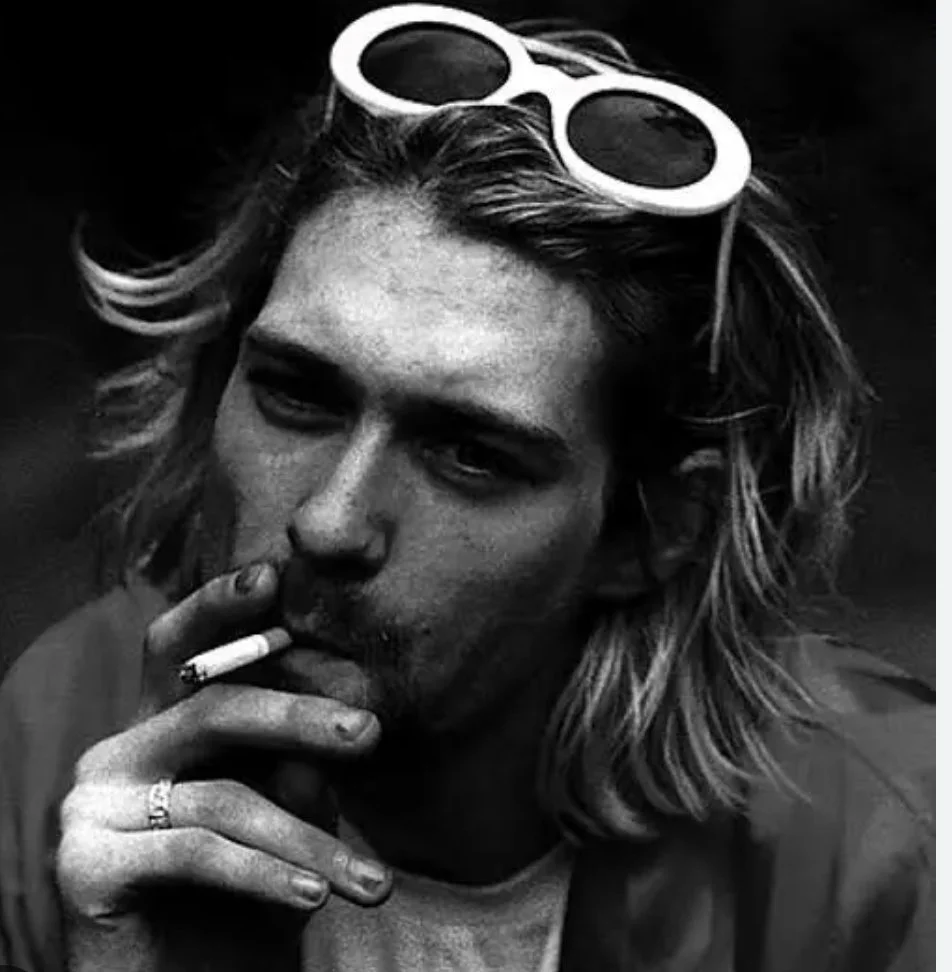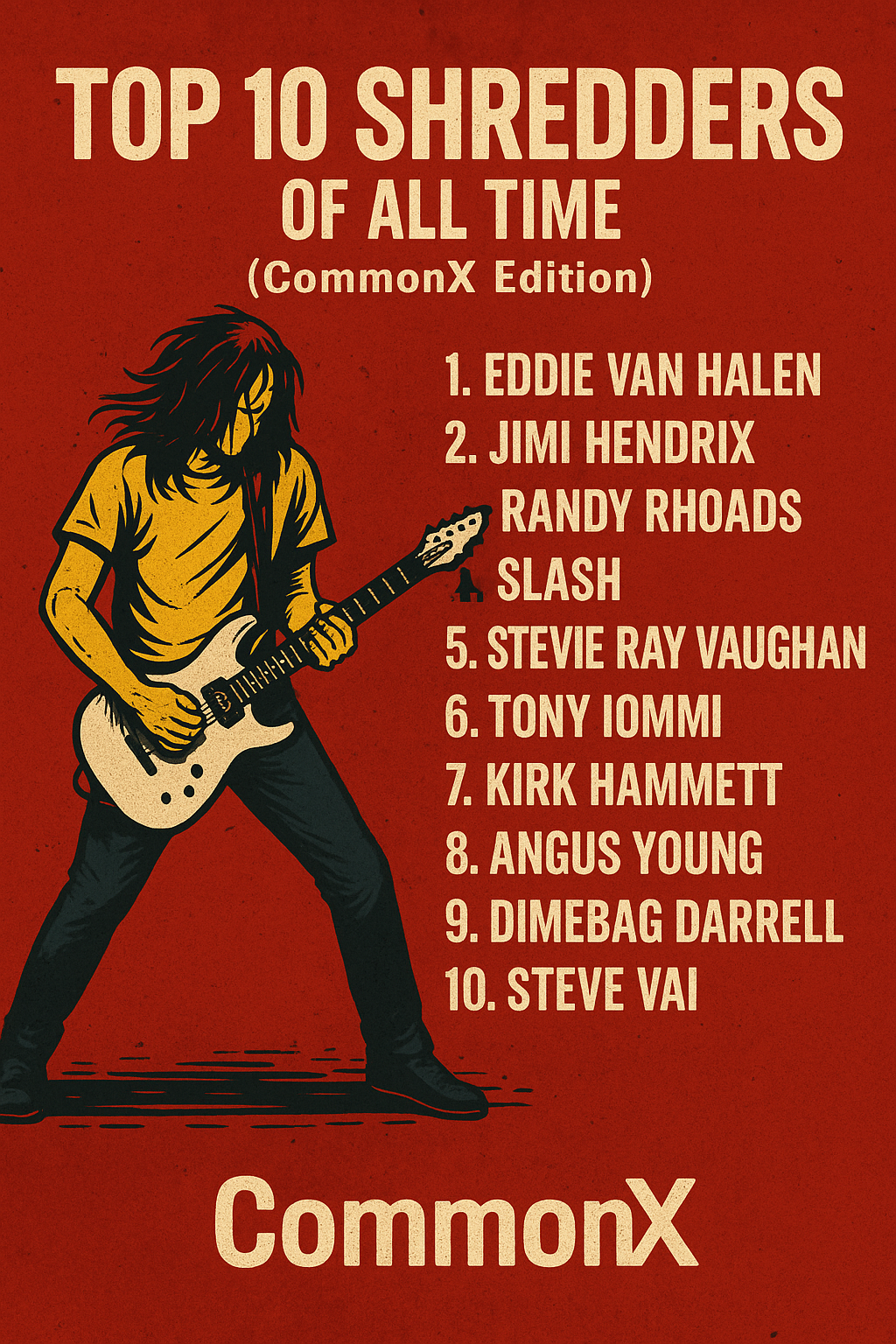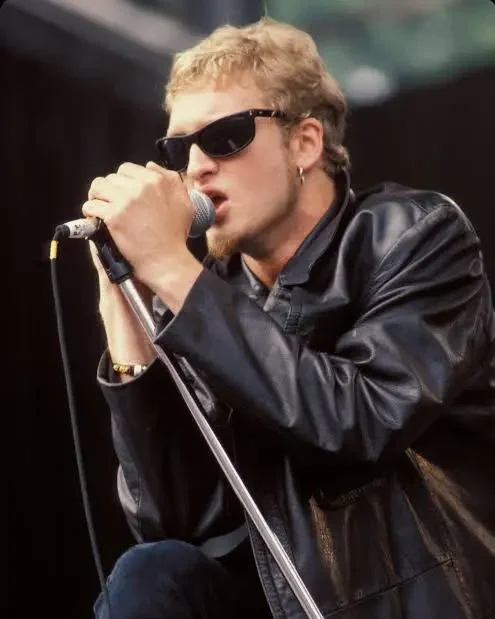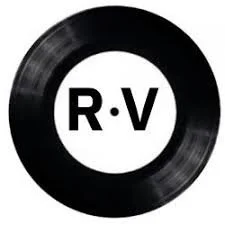🎸 “What Else Could I Write? I Don’t Have the Right.” — Kurt Cobain and the Echo of a Generation
Kurt Cobain didn’t just write songs — he wrote the ache of a generation that refused to be polished. In his tattered sweaters, chipped nails, and truth-soaked lyrics, he showed Gen-X what honesty really looked like. Decades later, his ghost still hums in every garage, every heartbreak, every artist daring to stay real.
“The sound of truth never dies. It just finds new chords.”
Written by Ian Primmer
In the quiet between the noise, Kurt Cobain’s words still linger like cigarette smoke in the back of every Gen-X memory. “What else could I write? I don’t have the right.” It wasn’t just a lyric — it was a confession. A poet caught between fame and fracture, saying the quiet part out loud before anyone else dared to.
Born from the grunge-soaked heart of Aberdeen, Washington, Cobain didn’t just write songs — he wrote truths that still punch decades later. Nirvana’s sound wasn’t built to be clean; it was built to be honest. That rawness, that resistance to polish, was the pulse of a generation that refused to be marketed, molded, or muted.
At CommonX, we talk a lot about what it means to grow up Gen-X — a mix of latchkey rebellion, mixtapes, and that sense of being unseen in the crowd. Cobain was that spirit, distilled into one human being. He didn’t just play music; he made us feel like we weren’t alone in our contradictions.
Even now, when you strip away the nostalgia and the myth, there’s something timeless about how Kurt saw the world — broken yet beautiful, cynical but sincere. In a time when social media celebrates the surface, his vulnerability feels even more radical.
Maybe that’s why Gen-X still finds itself humming his lyrics while scrolling headlines that feel more corporate than cultural. Cobain once said, “I’d rather be hated for who I am, than loved for who I am not.” That line could be tattooed across the entire CommonX ethos — and maybe across our hearts, too.
Because at the end of the day, being Gen-X isn’t about what we owned or streamed or posted. It’s about what we felt. And few ever made us feel quite like Kurt did.
From the CommonX Host’s Desk – Ian Primmer
Every time I listen to Kurt, I’m reminded why we started CommonX in the first place — to give a voice to the generation that never really asked for one, but damn well earned it. I think about those lines: “What else could I write? I don’t have the right.”
That hits harder as a creator, a dad, and a Gen-X’er trying to build something real. Whether it’s in the gym before sunrise or behind the mic with Jared, I try to bring that same raw honesty to what we do. We’re not chasing perfection; we’re chasing truth — just like Kurt did.
So here’s to every listener, artist, and misfit who still believes that being real means something. You’re our people.
Why the CommonX Podcast Is the Best Show in the Pacific Northwest
From the backroads of Deer Park to the digital airwaves of the world, the CommonX Podcast is redefining what authentic, independent media sounds like in the Pacific Northwest. Blending grit, music, and raw conversation, it’s more than a podcast — it’s a movement built by two Gen X voices who never stopped asking why.
A Podcast Born in the Heart of the Inland Northwest
When co-hosts Ian Primmer and Jared Mayzak launched CommonX out of a small shop studio in Deer Park, WA, they weren’t chasing fame — they were chasing truth.
What began as late-night conversations about music, media, and the human condition has evolved into one of the most talked-about independent shows in the region.
Their guest list reads like a cross-section of culture itself — from rock legends like Ivan Doroschuk (Men Without Hats) and Rudy Sarzo (Quiet Riot) to authors, veterans, political voices, and everyday people with extraordinary stories.
The Sound of the PNW — Unfiltered
The Pacific Northwest has always been home to the rebels, thinkers, and dreamers who prefer campfires over spotlights. CommonX taps straight into that energy — raw, honest, and unapologetically Gen X.
Listeners across Washington, Oregon, Idaho, and beyond tune in because the show speaks a language corporate podcasts forgot: authenticity. Whether it’s exploring faith, freedom, music, or modern censorship, CommonX keeps it real — no scripts, no spin, just conversation.
From TikTok to the Turntables
Before CommonX exploded, host Ian Primmer found viral success as GENXDAD on TikTok — proof that Gen X still knows how to command the internet. That following became the foundation for a regional powerhouse: the CommonX brand now spans TikTok, YouTube, Spotify, and a fast-growing web platform at commonxpodcast.com.
The show’s reach has extended from Spokane to Seattle, Portland, and Vancouver B.C., proving that the Pacific Northwest still knows how to make noise that matters.
What Makes CommonX the Best in the PNW
🎙️ Authenticity Over Agenda – Real talk without the political polish.
Rooted in Gen X Grit – A generation that built bridges between analog and digital.
Culture Meets Conversation – Every episode blends music, memory, and modern reality.
Independent to the Core – Produced by two lifelong Washington creators, not a network.
It’s not corporate, it’s not curated — it’s CommonX. And that’s exactly why it’s resonating from the Cascades to the Columbia.
Looking Ahead
With Season 2 already in production and high-profile guests lining up, CommonX is poised to bring the voice of the Pacific Northwest to a global audience. Whether listeners are lifelong locals or digital nomads, the message is the same: real conversation still lives here.
As the Pacific Northwest continues to grow, CommonX stands as its raw, unfiltered pulse — the podcast built for those who still believe authenticity matters.
🎸 Top 10 Underrated Grunge Tracks You Forgot You Loved (CommonX Edition)
CommonX digs deep into the Seattle sound — the forgotten grunge tracks that still roar beneath the surface. Crank it, feel it, and remember why it mattered.
By CommonX
Before playlists and polished pop, we had distortion, sweat, and heartache echoing from basements and bar stages. Grunge wasn’t a sound — it was a generation finally saying, “We’re not okay, and that’s okay.”
Everyone remembers Nirvana and Pearl Jam, but the underground had deeper veins — songs that hit just as hard and spoke louder in the quiet moments between chaos.
So fire up the SONOS, close your eyes, and fall back into the feedback. Here are the 10 underrated grunge anthems that still deserve to shake your soul.
⚡ 10. Screaming Trees – “Nearly Lost You” (1992)
That voice. That fuzz. That groove. The soundtrack to smoky nights and restless hearts — forever under-appreciated.
🎤 9. Mother Love Bone – “Chloe Dancer/Crown of Thorns” (1990)
Where it all began. Before Pearl Jam, there was MLB — poetic, tragic, and pure Seattle soul.
🔥 8. Mudhoney – “Touch Me I’m Sick” (1988)
The filthy riff that started it all. Raw, snotty, and brilliant — the sound that gave Sub Pop its swagger.
🎧 7. Temple of the Dog – “Say Hello 2 Heaven” (1991)
Chris Cornell’s voice in its purest form — grief turned into grace. A tribute that became a movement.
🌀 6. L7 – “Pretend We’re Dead” (1992)
Feminist fury meets killer hooks. L7 proved you didn’t need to smile to melt faces.
💔 5. Candlebox – “You” (1993)
Melodic, emotional, and criminally underrated. Candlebox gave grunge a pulse that could actually break hearts.
⚙️ 4. The Melvins – “Hooch” (1993)
Heavy, sludgy, hypnotic. The godfathers of doom who inspired Nirvana’s heaviest moments.
🧠 3. Soundgarden – “Room a Thousand Years Wide” (1991)
Buried behind the hits lies one of their best riffs. Cornell and Thayil made darkness sound divine.
🚀 2. Alice in Chains – “Nutshell” (1994)
If you ever doubted grunge had poetry, listen again. Layne’s voice still echoes in every lonely apartment at 2 a.m.
🦇 1. Stone Temple Pilots – “Silvergun Superman” (1994)
Overshadowed by hits like “Plush,” this deep cut is pure STP swagger — bassline grooves, velvet vocals, and a solo that burns slow.
🎧 Honorable Mentions
Nirvana – “Aneurysm” | Pearl Jam – “Release” | Hole – “Malibu” | Bush – “Cold Contagious”
🧠 Excerpt
CommonX digs deep into the Seattle sound — the forgotten grunge tracks that still roar beneath the surface. Crank it, feel it, and remember why it mattered.
written by Ian Primmer
Funniest Movies of All Time (The Gen-X Edition)
From Ghostbusters to Step Brothers, CommonX salutes the films that made sarcasm sacred and stupidity sublime. Comedy before filters — pure, loud, and unforgettable.
🎬 Funniest Movies of All Time (The Gen-X Edition)
By CommonX
Before streaming queues and skip buttons, there was Blockbuster roulette — that sacred moment when you grabbed a VHS because the cover looked stupid enough to be hilarious. Comedy was raw, quotable, and borderline dangerous.
We didn’t need perfect lighting or woke punchlines — we had Chevy Chase falling down stairs, Bill Murray breaking the fourth wall, and Jim Carrey talking out of his butt.
So grab the popcorn, dust off your VCR, and let’s roll through the comedies that built our sense of humor, broke all the rules, and made us the sarcastic legends we are today.
😂 10. Ace Ventura: Pet Detective (1994)
Jim Carrey unleashed pure chaos in Hawaiian shirts and made talking to animals cool. Proof that rubber-faced energy could carry an entire decade.
🎯 9. Caddyshack (1980)
Rodney Dangerfield, Bill Murray, and a gopher puppet — comedy perfection. It taught us the two rules of golf: swing hard and don’t give a damn.
🧻 8. Dumb and Dumber (1994)
A masterclass in idiocy. Lloyd and Harry made stupidity into an art form. That “most annoying sound in the world”? Still undefeated.
🧀 7. Wayne’s World (1992)
Cable-access kings, air guitars, and catchphrases for days. Party on, Garth. Party on, Wayne.
🤦 6. Groundhog Day (1993)
Bill Murray vs. time itself. Somehow philosophical and funny enough to quote daily — literally.
🧑💼 5. Office Space (1999)
TPS reports, cubicle hell, and printer revenge fantasies. The film that made every desk-job survivor nod in solidarity.
🕶️ 4. The Big Lebowski (1998)
The Dude abides, man. Coen Brothers brilliance wrapped in bowling balls, White Russians, and existential absurdity.
🧔 3. Planes, Trains and Automobiles (1987)
Steve Martin and John Candy. Heart + hilarity + travel hell. Thanksgiving never looked so good.
🧠 2. Ghostbusters (1984)
Comedy, sci-fi, and sarcasm blended perfectly. Murray, Aykroyd, and Ramis made bustin’ look fun and profitable.
🏆 1. Step Brothers (2008)
Technically not Gen-X-era, but spiritually? 100%.
Ferrell and Reilly captured the man-child energy that every Gen-X dad secretly relates to. “Did we just become best friends?” — yes, yes we did.
🍿 Honorable Mentions
There’s Something About Mary, Tommy Boy, Anchorman, Clerks, Friday, Napoleon Dynamite.
Top 10 Shredders of All Time (CommonX Edition)By CommonX
From Van Halen to Vai, CommonX salutes the ten who turned noise into art and rebellion into rhythm. Crank it up — feedback is freedom.
🎸 Top 10 Shredders of All Time (CommonX Edition)
By CommonX
Before playlists and plug-ins, there were six strings, blood on the frets, and neighbors pounding on the wall. For Gen X, guitar heroes were gods — and distortion was scripture. So grab your SONOS, crank it until the drywall shakes, and salute the riff kings who taught us that feedback is freedom.
⚡ 1. Eddie Van Halen – The Architect of Awe
Two-hand tapping, harmonic squeals, and tone so warm it could melt steel. “Eruption” changed everything; every kid with a guitar chased that lightning ever since.
🎸 2. Jimi Hendrix – The Cosmic Trailblazer
He made the Stratocaster cry, laugh, and set the sky on fire. “Voodoo Child” wasn’t a song — it was a ritual.
⚡ 3. Randy Rhoads – The Classical Firestorm
Ozzy’s prodigy fused classical precision with metal fury. Every solo was a master class in melody and madness.
🎩 4. Slash – The Soul in the Smoke
Top hat, Les Paul, cigarette — instant icon. His tone drips blues and attitude; “Sweet Child O’ Mine” is eternal youth in riff form.
🎵 5. Stevie Ray Vaughan – The Texas Hurricane
Pure feel. No tricks, no filters — just emotion pouring through Fender strings. When SRV bent a note, you felt it in your bones.
⚙️ 6. Tony Iommi – The Godfather of Heavy
Fingertip injury? No problem. He invented heavy metal instead. Sabbath’s riffs are the bedrock of every down-tuned dream that followed.
⚡ 7. Kirk Hammett – The Metal Surgeon
Precision meets chaos. The wah-wah wizard of Metallica built solos that slice through stadium air like jet engines.
⚡ 8. Angus Young – The Eternal Rebel
School uniform, duck-walk, Gibson SG — pure electricity. “Back in Black” and “Highway to Hell” still sound like rebellion bottled.
🔥 9. Dimebag Darrell – The Southern Thunderstorm
Groove, grit, and guts. His Pantera riffs came with tire smoke and whiskey breath — heavy metal with a grin.
🚀 10. Steve Vai – The Alien Virtuoso
Flawless technique and fearless imagination. Vai turned shred into symphony — proof that technical mastery can still have soul.
🎧 Honorable Mentions
Joe Satriani, Nuno Bettencourt, Prince, Nancy Wilson, and Joan Jett — the undercurrent that keeps the six-string alive.
🏁 Throttle Therapy: The GOAT Never Quit (Ricky Carmichael)
CommonX pays tribute to Ricky Carmichael, the GOAT of grit, and the Gen-X spirit that never learned to coast. Fueled by Summit Racing and Alpinestars — built for the bold.
Illustrated poster of motocross legend Ricky Carmichael mid-air on his dirt bike, wearing Alpinestars gear, surrounded by dust and motion blur. Bold text reads “Throttle Therapy – The GOAT Never Quit,” with Summit Racing and Alpinestars logos beside a graffiti-style CommonX tag. The artwork captures Gen-X rebellion, adrenaline, and the unstoppable spirit of speed.
By Ian Primmer - CommonX
There’s a moment every Gen-X kid remembers — the smell of two-stroke in the air, a dirt trail disappearing into the horizon, and a hand-me-down bike that rattled more than it roared. We didn’t need perfect; we needed fast. Speed wasn’t a sport — it was therapy. It was escape. It was rebellion in motion.
And nobody embodied that more than Ricky Carmichael, the man who turned motocross from a pastime into poetry — wide open, fearless, and all-in.
Ricky Carmichael at motorcrossusa.com
The GOAT of Grit
Ricky wasn’t born into fame — he built it from the ground up, throttle by throttle, crash by crash. He wasn’t chasing luxury or algorithms; he was chasing seconds. Every turn was a war zone, every fall a test of will. That’s what made him the Greatest of All Time — not just his speed, but his refusal to quit. Gen X gets that. We were raised on scraped knees and loud engines — the analog roar that told the world we were alive. While everyone else was learning to play safe, we were learning how to fly.
Carmichael didn’t just win races; he defined the culture. He was the dirt-track philosopher, proving that greatness doesn’t come from polish — it comes from persistence.
From Dirt Tracks to Driveways — The Gen-X Engine
We’re older now. The bikes might be cleaner, the garages more organized, but that itch never went away.
Every Gen-Xer still knows what “wide open” feels like.
It’s that same pulse that drives us — whether it’s building businesses, podcasts, or lives that refuse to idle.
That’s why Summit Racing and Alpinestars hit home for us. They’re not brands — they’re badges of the same rebellion that raised us.
“If you grew up fixing what you broke, you’re one of us.”
Summit Racing keeps the garage sacred — the modern temple of creativity, sweat, and horsepower.
Alpinestars keeps the body safe while the spirit chases chaos.
Together, they represent the new chapter of Gen-X grit — smarter, stronger, and still addicted to the rush.
🏁 Sponsored by Summit Racing & Alpinestars
🛠️ Built for the bold. Fueled by freedom.
Shop Summit Racing
Explore Alpinestars
Concrete Waves and Power Chords
When rebellion echoed through cracked pavement and feedback screamed from garage amps, a generation found its voice. CommonX looks back at the days of Sub Pop, Tony Hawk, and the concrete wave that shaped us — when skateboards were freedom, distortion was therapy, and the noise was the message.
Concrete Waves and Power Chords
By Ian Primmer - Cohost, CommonX
There was a time when rebellion didn’t come from a phone screen — it came from the sound of polyurethane wheels chewing through cracked concrete and a power chord screaming through a Peavey amp. The soundtrack of the 90s wasn’t choreographed or corporate. It was raw, loud, and gloriously unrefined — born from garages, burned-out warehouses, and a record label in Seattle that changed everything: Sub Pop. The air was thick with sweat, smoke, and spray paint — the kind that stuck to your lungs and your memory. Every scraped knee and every snapped string meant something. You didn’t scroll for inspiration — you created it, one crash and one chord at a time. Back then, nobody was talking about going viral. You earned your audience by waking the neighborhood. You didn’t care who was listening — you cared that someone heard you. And that sound — that clash of motion and music — was everything. It was how Gen X spoke when the world wasn’t listening.
The Sound of Defiance
We didn’t just listen to music — we inhaled it. Those riffs and feedback loops were oxygen for every kid who didn’t fit the mold, who couldn’t afford preppy clothes or polished dreams. The noise was the message. Every distortion pedal was an act of defiance. Every garage was a stage. Every mosh pit was a therapy session no one talked about. Bands like Nirvana, Soundgarden, and Mudhoney didn’t just write songs — they wrote escape routes. They gave permission to feel broken, to question authority, to scream without explanation and then came the others: Tool with their precision chaos, Green Day with that punk edge that made you want to quit your job and start a band, Pearl Jam turning stadiums into group therapy sessions.
It wasn’t about fame — it was about the feeling. That hum of bass that hit your ribs harder than any lecture ever could. That echo of rebellion that made you believe — for just a few minutes — that the system couldn’t touch you. You didn’t need a producer or a million followers. You just needed a voice and the guts to use it. That’s what defined us. That’s what set Gen X apart. We were the first generation to realize that corporate America couldn’t commodify honesty forever.
The Streets Were Our Stage
Our culture didn’t come pre-packaged — we made it. Every cracked ramp, every sticker-bombed deck, every photocopied show flyer — that was our social media. Tony Hawk was the god we all prayed to, but our church was concrete, and our hymns came from cheap guitars turned all the way up. We didn’t talk about mental health. We lived it — through sound, motion, and scraped-up skin. Music and skateboarding weren’t hobbies; they were survival tactics for a generation that refused to sit still or shut up. When you were flying down a hill at midnight with Silverchair in your headphones and no helmet, that was freedom. It was reckless, stupid, beautiful — and it was ours. And right there in the mix — between the smell of asphalt and the static buzz of a cheap amp — was Tony Hawk. Not just a skater, but a spirit guide for every kid who believed a parking lot could be a playground and a bruise was just proof you tried. Hawk wasn’t fame; he was freedom on four wheels, soaring higher than the world said possible.
The ramps were our art galleries, our tricks our brushstrokes. And when the world didn’t understand it, we made them — one spray-painted tag at a time. Every halfpipe had a story written in Krylon. Every wall, every deck, every dingy garage door carried the mark of our generation’s graffiti gospel: make noise, make color, make something real.
Tony Hawk in 1986 tearing it up and inspiring his generation of misfits to go all out!
Sub Pop: The Label That Let Us Live Loud
Before Sub Pop, major labels told artists what to sound like. After Sub Pop, the world had to listen. Bruce Pavitt and Jonathan Poneman didn’t set out to start a revolution — they just wanted to bottle the sound of Seattle’s underbelly. But what they created was the most authentic record label of the modern age: one that ran on coffee, chaos, and community. Sub Pop gave the world a front-row seat to real. They didn’t chase trends — they documented truth. They didn’t sign acts for looks — they signed them for feel. Their offices were cluttered, their contracts were basic, their gear was borrowed — but their legacy was nuclear.
They found kids with four-track recorders and turned them into legends. They gave the outcasts a label, the misfits a megaphone, and the city of Seattle a soul.
It was never about selling records — it was about capturing lightning before the corporations bottled the thunder. Sub Pop’s logo became a badge of honor — a stamp that said, “This isn’t for everyone.” And that was the point. When Bleach dropped, when Superfuzz Bigmuff hit, when Sliver rattled through speakers across the country — you could feel the shift. The label wasn’t polished; it was powerful. It didn’t create a genre; it created a generation. And when the majors came calling, when MTV wanted a piece, when every mall brand started selling flannel — Sub Pop stayed Sub Pop. Still underground. Still imperfect. Still loud. They didn’t just distribute music. They distributed freedom.
CommonX and the Echo of the Underground
Fast-forward a few decades, and that DIY spirit’s still alive. You hear it every week when the mics fire up on CommonX. It’s not scripted, it’s not perfect — it’s raw talk from real people. Just like those garage bands, we’re making noise that matters. We might not be slinging guitars, but we’re still shredding through the same noise — the censorship, the fake trends, the endless filters. And we’re still powered by the same drive that once made a kid pick up a skateboard or a Stratocaster: the need to be heard. Because the truth is, the world doesn’t make rebels anymore. It makes algorithms. But for those of us who remember, we still feel it — that spark of distortion that said “don’t just consume — create.” Concrete waves. Power chords.
The pulse of a generation that never stopped moving forward — even when the world told us to grow up.
From the Underground to the Airwaves
The underground didn’t die — it just changed frequencies. It traded distortion pedals for microphones, basement shows for streaming platforms, and flyers on telephone poles for algorithms and hashtags. But the energy? The pulse? That raw, unfiltered truth? It’s still here. It lives in CommonX. Every episode, every post, every conversation we throw into the world carries that same Sub Pop DNA — the defiance of the overproduced, the rejection of the sanitized, the celebration of real.
We don’t have an A&R rep; we have a mission. To amplify voices that deserve to be heard. To talk about what others scroll past.
To cut through the digital noise with the same authenticity that once made a garage in Seattle sound like the center of the universe. CommonX was never built to trend — it was built to resonate. We don’t chase algorithms; we chase connection.
We don’t clean up the rough edges; we lean into them, because that’s where the soul lives. Like Sub Pop’s bands, we’re a mixed bag of thinkers, builders, and rebels — misfits who somehow found a frequency that makes sense together. We’re not mainstream. We’re main vein — the current running underneath all the noise. And just like that first wave of Seattle sound, we’re not here to fit in. We’re here to remind people what it feels like when something real hits — when art is dangerous again, when truth shakes walls, when you turn it up and say, “Yeah… that’s us.”
So maybe we don’t have a mosh pit anymore. Maybe we’ve swapped guitars for microphones and stages for studios. But the energy’s the same. The rebellion’s still alive. And the noise? It’s only getting louder. CommonX isn’t a podcast — it’s a movement. An analog heart beating in a digital world. A continuation of the underground spirit that refuses to fade out quietly. Because as long as there’s concrete to skate, distortion to crank, and stories to tell — Gen X will always have a sound.
Layne Staley (1967–2002): The Voice That Still Echoes in Us All
Layne Staley wasn’t just another frontman — he was the cracked mirror of our generation. His voice carried every ache, every truth, and every sleepless night we never said out loud. In this CommonX tribute, we look back at the man who turned pain into poetry and left an echo that refuses to fade.
by Ian Primmer, Co-host-CommonX
When Layne Staley took the stage during MTV Unplugged, it wasn’t just another performance — it was confession through melody. His hollow eyes told stories the lyrics could barely contain. The lights were soft, the air thick with silence, and a generation sat frozen in front of their TVs watching a man unravel his soul.
Layne Staley performs on MTV Unplugged, seated under soft blue-purple lights, microphone in hand, delivering an emotional performance that defined the 1990s grunge era.
Staley didn’t just sing about pain — he made it sound beautiful. Every note was a war between addiction and truth, between the life he lived and the one he wished he could reach. In an era that taught Gen X to bury feelings beneath sarcasm and cynicism, Layne stood there — fragile, unfiltered, unafraid — and let it all bleed through the mic.
“I believe in love and what it’s done to me.”
Those words, that trembling voice, became the heartbeat of the 90s Seattle sound — a generation of latchkey kids, garage-band dreamers, and late-night thinkers who found comfort in his chaos.
The Weight of a Generation
For many of us, Alice in Chains wasn’t background music; it was a survival tool. Staley’s voice could make you feel less alone in the middle of a storm. Songs like Nutshell, Down in a Hole, and Rooster weren’t just tracks — they were lifelines. Every time Layne opened his mouth, it was like he reached into the static of our teenage bedrooms and said, “I get it.” Even now, his performances remain hauntingly timeless. Watch that MTV Unplugged session again and you’ll see it — the rawest honesty ever broadcast through a mainstream channel. It was unpolished, imperfect, and completely unforgettable.
Layne Staley live in concert — the soul of Alice in Chains. His delivery was never about perfection; it was about truth. Every lyric carried the weight of lived experience, making him one of the most honest voices to emerge from the Seattle grunge movement.
The Beauty in the Broken
Layne’s story wasn’t a fairytale. It ended too soon, and yet his voice never really left. His pain became a mirror for an entire generation still trying to understand why the brightest lights often burn the fastest. In the years since his passing, his influence has only grown stronger. You can hear his echo in every modern artist who dares to show vulnerability, who sings like they’ve lived every word. Layne Staley didn’t just define an era — he humanized it.
Still Echoing
Two decades later, we still hear him — in the static between songs, in the ache of every record player needle, in the hearts of every Gen X’er who refuses to let the past fade quietly. He was more than a frontman. He was a poet for the misunderstood.
And as long as his songs keep playing, Layne Staley will never really be gone.
About This Article
This tribute is part of The X-Files series by CommonX Podcast, where we celebrate the artists, thinkers, and cultural sparks that shaped Generation X.
🎧 Read more at commonxpodcast.com/thex-files

























